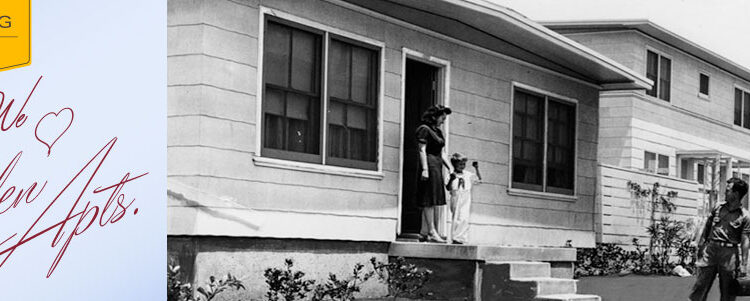
History of Garden Apartments
Garden apartments originated from urban planning and landscape concepts first adapted from the British in the nineteenth century.
Urban planners Clarence S. Stein and Henry Wright spearheaded the Garden City Movement in the United States in the early twentieth century, envisioning orchestrated environments that included buildings of low density, human scale, and acres of shared open space.
While garden apartment communities sprung up around the country, this design philosophy truly flourished in Los Angeles.
The region's climate was well-suited to the emphasis on nature and open space. The carefully planned complexes provided an attractive and affordable alternative to the substandard housing of the Great Depression. They also provided quality housing for defense workers during World War II, as well as returning veterans and their families after the war.
Primary characteristics of the garden apartment complex include:
- Development of the site as a "superblock"
- Separation of automobile and pedestrian traffic
- Low to medium density and building coverage
- Standardized building types
- Emphasis on open space and park-like landscaping
In 2012, architectural historian Katie Horak (Architectural Resources Group) and landscape historian Steven Keylon co-authored an historic context statement on Los Angeles’ garden apartments for the Conservancy. For a detailed examination of the historical patterns and trends that led to this local movement, please refer to the full report. An executive summary is also available.
You can also read more about several of Los Angeles’ garden apartments in our We Heart Garden Apartments! walking tour booklet.